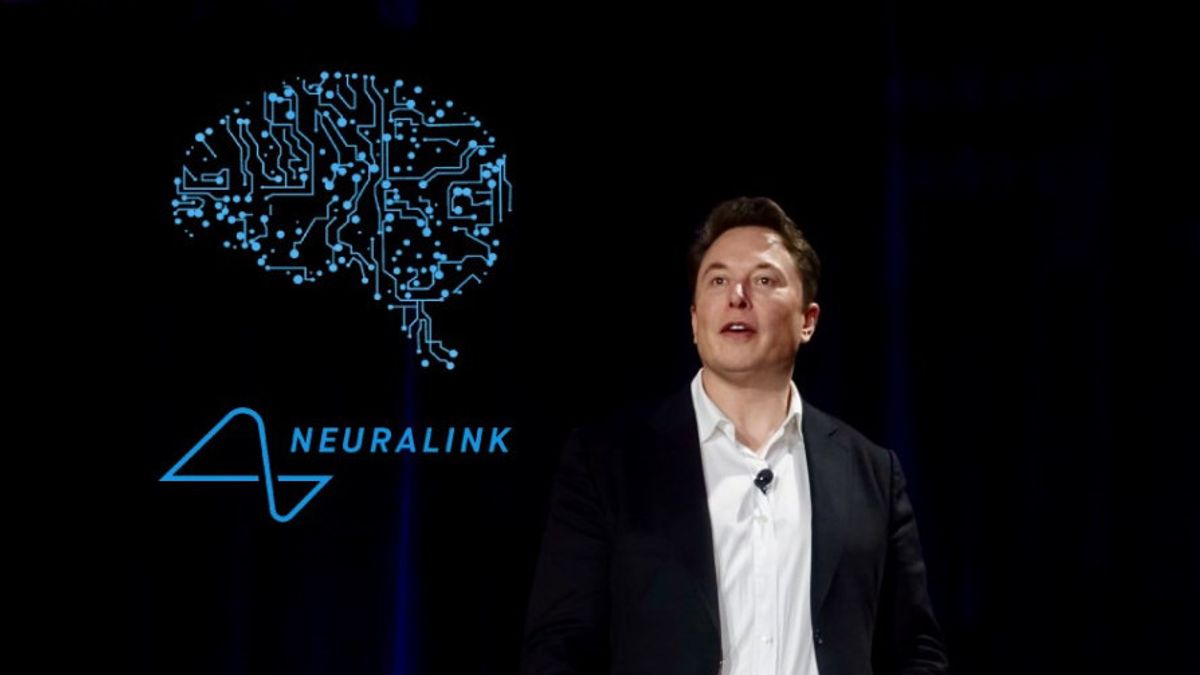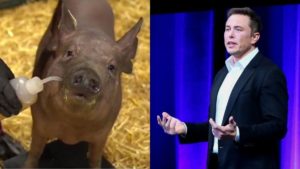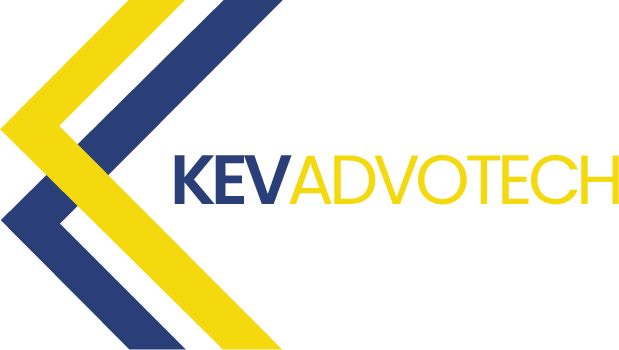
27 Apr Elon Musk’s Neuralink: Hope or Hype for those with brain or spinal cord injuries?
If you thought the idea of microchips in humans was a bit too science fiction for real life, wait until you hear what Elon Musk’s Neuralink has in store for the very near future.
In a recent blog post, Would You Be Willing to Microchip Your Special Needs Loved One?, I expressed an eagerness to consider a chip implanted into your hand, provided the results might benefit our 36 year-old special needs son, Kevin, who deals with issues caused by a Traumatic Brain injury when he was 15. Among my key assumptions was the certainty that a microchip would simply be monitoring and reporting on various key physical elements in the body, such as heart rate, blood pressure, and other vitals. Things we could immediately react to and address accordingly to remediate the issue.
I was also intrigued by the possibility of the implanted microchip storing key personal information such as identification, medical information, and emergency contact info; things that would quickly assist medical personnel and law enforcement during an emergency situation.
Other key features assumed real time GPS to assist when your loved one strays, is lost, or simply to have peace of mind knowing where they are at any given moment. Some ‘nice to haves’ included storing of passwords, cards and tickets, along with capability to gain access and entry into their home without a physical key.
In other words, my interest and support were based on the assumption that the microchip was ‘READ ONLY’ with ‘limited’ “WRITE” capabilities. The exception being that you could store (write) important personal information to a database that is necessary for someone to aide your loved one during an emergency situation.
And then I was astonished to learn about Neuralink
Recently, a friend shared a YouTube video of Elon Musk and his team at Neuralink doing a live demonstration of the products they are developing and testing. Most of you might recognize Elon Musk as the Founder and head of Tesla (the electric car company), which is now a publicly owned company, as well as Space X, which is privately held by Mr. Musk, and designs, manufactures and launches advanced rockets and spacecraft. And as of this writing, he appears to have an accepted agreement to buy Twitter, one of the predominant, social media platforms.
As I watched the video replay of the Neuralink demo, I was quite fascinated and intrigued by the premise of the company and the products they are developing. My mind was flooded with a variety of emotions. On one hand, I was excited about the possibilities and outcomes they hoped to achieve. Neuralink’s first products could be advanced implants to treat brain injury patients or someone who is paralyzed. Such implants would build on simpler electrodes already used to treat brain disorders like Parkinson’s disease.
My fascination soon shifted toward dismay
 I was a bit uncomfortable to learn the methods they plan to use to achieve these results. For starters, the implant procedure (which involves cutting out a piece of your skull to insert a microchip and associated electrodes) would be done in its entirety by a robot! No human hands involved in the actual procedure. I’m not quite sure how I feel about that, frankly. While I understand humans are prone to error, a robot is only as good as the human(s) who designed and programmed it. Again, I’m not sure I’m ready for a robot to drill a hole and insert a chip into my son’s head!
I was a bit uncomfortable to learn the methods they plan to use to achieve these results. For starters, the implant procedure (which involves cutting out a piece of your skull to insert a microchip and associated electrodes) would be done in its entirety by a robot! No human hands involved in the actual procedure. I’m not quite sure how I feel about that, frankly. While I understand humans are prone to error, a robot is only as good as the human(s) who designed and programmed it. Again, I’m not sure I’m ready for a robot to drill a hole and insert a chip into my son’s head!
And then the pigs took center stage
The live demo got even more interesting.  As I experienced more than a few times during my years in the Information Technology (IT) industry and being part of a sales team, live demos don’t always go as planned. The Musk led demo came to a slow grind and began to stray off the tracks. The cameras were focused on a few pigs across the stage as the subject of the demo to show the effect of the chip implants. Yes, you read this correctly. They used real life pigs in the demo! Let’s just say the demo itself was a bit underwhelming, as the pigs were not very cooperative. And I really don’t think they showcased the technology in a light that was relatable. It left me with more questions than answers.
As I experienced more than a few times during my years in the Information Technology (IT) industry and being part of a sales team, live demos don’t always go as planned. The Musk led demo came to a slow grind and began to stray off the tracks. The cameras were focused on a few pigs across the stage as the subject of the demo to show the effect of the chip implants. Yes, you read this correctly. They used real life pigs in the demo! Let’s just say the demo itself was a bit underwhelming, as the pigs were not very cooperative. And I really don’t think they showcased the technology in a light that was relatable. It left me with more questions than answers.
Flashbacks to a sales call gone wild
Throughout the demo and follow-on Q&A, I had another not so fond flashback from my days in IT. Back in the late 1990’s, I led a sales team at IBM responsible for new and existing business at a large bank in Boston. As we prepared for a very important sales call, various members of my team convinced me to bring them along to the client meeting as well. Against my better judgment, I agreed to do so. Ultimately, I walked into the client’s large conference room with a small army of sales and services specialists at my side; probably 15 or more of them.
It was a disaster and a huge mistake. I quickly lost control of the room and we looked disorganized and ill-prepared for the massive project we had hoped to win. Shortly afterwards, the bank gave a major competitor a ‘verbal’ that they had won the business. We were devastated. Thankfully, I was able to convince the client to allow us a mulligan as they agreed to a 2nd meeting so we could re-present our proposal. This time, I walked into the meeting with only one other person by my side. I chose one of my smartest people; someone who could not only explain the more technical aspects of our solution and project plan, but also explain it in very clear and plain language that businesspeople in the room could understand. This time, we hit a homerun. We ultimately won the business and received a signed contract.
What can happen when everyone is the smartest person in the room?
So, as I watched Elon Musk turn the room over to his incredibly brilliant staff, things got even more interesting. Or maybe less interesting in some regards. With him in the room were his chief architects, engineers, scientists, software developers, materials experts, and heads of every important functional department at Neuralink.
These were probably the smartest people ever assembled in one room to take questions from a live audience on the web. As questions came in from the live web audience, Mr. Musk handed the microphone over to each respective subject matter expert on staff to provide the answer. The problem was that many of them could only talk and answer in rocket scientist or brain surgeon language. Very few of them spoke in plain, understandable terms that an average audience might understand.
Based on the onslaught of comments popping up in the live chat replay, I surely wasn’t the only one struggling to comprehend the discussion. As the staff’s responses and conversation grew increasingly technical, I could see from the chat box comments that were rolling in that the remote audience was starting to ‘glaze over’ a bit. The remote audience didn’t necessarily tune out completely, but their comments started to reflect a bit of sarcasm and doubt.
At one point in the Q&A, the topic turned to upgrade paths and how a new version of a brain implant would require a hardware change in addition to software updates. It was clear this would require the robot to remove the current chip implant in your skull and replace it with the newest version with improved capabilities and ‘fixes’.
And unlike the microchip implant possibility mentioned in our previous article, Neuralink is talking about developing the capability to instruct the brain to move limbs, say words and take specific actions. In other words, developing the capability via AI (artificial intelligence) to completely manage someone’s brain via the implant and its associated neuron pathway wires.
Something obvious was missing
While I’m not exactly fearing a Frankenstein outcome, I’m sure there could be unintended consequences. Hence my feelings that given the complexity and potential risks of such a procedure, and likely apprehension by potential patients and consumers, Mr. Musk might have been better served having someone on point to answer most of the questions raised by the audience. Someone who could answer in a more relatable manner and understandable language.
 But I reminded myself they were talking about trying to solve some of life’s most difficult challenges, such as the impact of someone surviving a brain injury and having to relearn basic functions all over again. Or someone suffering a spinal cord injury who could no longer walk and is subjected to life in a wheelchair and 7×24 assistance. These are extremely complex problems and indeed require the most brilliant minds to solve.
But I reminded myself they were talking about trying to solve some of life’s most difficult challenges, such as the impact of someone surviving a brain injury and having to relearn basic functions all over again. Or someone suffering a spinal cord injury who could no longer walk and is subjected to life in a wheelchair and 7×24 assistance. These are extremely complex problems and indeed require the most brilliant minds to solve.
And as I thought about it further, I realized that Neuralink doesn’t even have a commercial product to sell today. The team is currently focused on research, development and testing. Mr. Musk wants to continue to attract the most brilliant talent to his team. Over time, I would imagine his attention will turn toward commercialization and hiring of people that can be the interface between all these brilliant in-house minds and the general public and potential early adopters and clients. People that can speak in simpler language to make their products more relatable and less overwhelming.
Elon Musk’s character revealed
Prior to writing this article, I dug deep into researching and reading all I could about Elon Musk, who he is, what he stands for, and why he chose this endeavor.
Here are links to some articles and recent stories that I found interesting during my research. In addition, this interview of Elon Musk in 2012 reveals a bit more of his personal side.
As I did more research, I soon developed a stronger sense of respect and appreciation for what he is doing. I do realize there are some people out there who might loathe him simply because he is said to be the richest person in the world. Some despise his politics. But I don’t think he identifies himself as either Republican or Democrat. He does openly cite more of a Libertarian view; someone who prefers more autonomy and political freedom and free choice, while minimizing the role of government. I suppose that alone is enough to scare complacent, lifelong politicians on both the red and blue sides of the aisle.
Perhaps the most revealing element of Musk’s character is his stated desire to choose businesses to build and projects that can positively affect the future of humanity. He thinks deeply about the future of the world and humanity. And he likes to clearly describe how he believes Tesla, Space X and Neuralink contribute towards these goals and ambitions. I think his intent is genuine.
My favorite takeaway in my research is that he constantly encourages negative feedback. In fact, he demands it. He doesn’t want people to tell him what they like about his products or business; but that they tell him what they don’t like. Simple yet brilliant, I think.
What can we expect from Neuralink going forward?
Given what I think I now know about Elon Musk, the entrepreneur and high achiever, Neuralink will not just simply meet FDA guidelines regarding safety and reliability before product launch approval; they will exceed those stringent requirements in every possible way. ElonMusk won’t bring those products to market otherwise.
Personally, I’m much more interested in what Elon Musk does with Neuralink versus what he does now with Twitter. But given today’s politically charged environment and often polarized society, coupled with media outlets constantly stirring controversy for sake of ratings, it’s a safe bet (unfortunately) that Neuralink coverage will continue to take a back seat to other Musk related news. Likely even more so now that he bought Twitter.
We’ll continue to follow Neuralink closely here at KEVADVOTECH and report on any interesting new developments. As always, we encourage feedback via our social media outlets or please CONTACT US directly.


